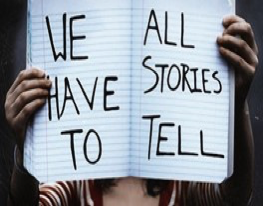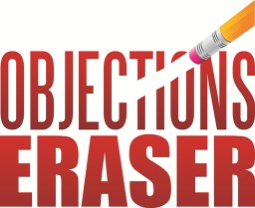Sales representatives give presentations all the time. They can range from a fifteen-minute Q & A to a multi-hour comprehensive review of a company’s response to an RFP. There are decades of books, programs, videos, articles and chapters on conducting an effective sales presentation. Unfortunately, most sales representatives build a comfort zone around a PowerPoint presentation and replicate that “safe” presentation for every sales opportunity.
Most sales presentations speak more about what the seller feels is a safe and comfortable format than what will engage the buyer. That might adequately serve the buyer’s need when faced with commodities or succinct solutions, but it does nothing to distinguish the presentation, engage the buyer and elevate the buyer’s confidence in a complex solution. Sales representatives might wish to consider ten best practices for planning and delivering a memorable presentation.
-
Own the Room.
Space is a major factor influencing the outcome of a presentation. Always inspect the room or presentation area. How much wall space is available and how will you use it? Where are the electrical outlets? Is there adequate space for presenters to move or participants to congregate? What are the audio-visual requirements of the area? A boardroom may be great place for a meeting but a horrible place for a presentation. Even though you may be presenting in the customer’s office complex, the audience expects the presenter to “own” the room.
It’s a best practice to survey the room a day or two before the presentation. Ask yourself, “How can I use this space to convey my message?” Can you use wall space to display visuals or graphics? Is there adequate space to provide a life-size model? What visuals might prompt your audience to believe that this presentation is important to you and your company?
A new sales representative in the refreshment services industry was preparing his presentation for a company that wanted a variety of vending and food machines. The presentation was scheduled for a small conference room in the customer’s office complex. It seemed almost claustrophobic.
After having lunch with a friend in marketing, the new sales representative changed the presentation to a large room and (with the help of marketing) staged seating and conversation areas for coffee breaks and lunch. He reasoned that it wasn’t about the machines—it was about the coffee drinking experience and the warmth and inclusiveness of the area. The buyers were greatly impressed. This changed the presentation from a competition of equipment to a test of which company could create the experience the customer wanted to achieve. Big win!
-
Combine High & Low Technology.
Here’s the bottom line: don’t fall in love with your standard PowerPoint presentation. Audiences like visuals, pictures and wall displays. Millennials have seen their share of PowerPoint presentations and have an appetite for a variety of different formats. Sales representatives should combine the use of blackboards, whiteboards, flip charts, models and displays with streaming video and PowerPoint.
-
Engage the Audience.
 In developing the presentation, sales representatives should consider how and when to engage the audience. Asking the audience to help rank order objectives or list desired outcomes is a great way to involve them while confirming your understanding of the situation they face. Don’t leave audience participation until the Q & A period at the end. Keep the audience participation succinct and focused. You don’t want the participation to become lengthy or drift off-message. Involve them with specific questions that are helpful in expanding on a key point.
In developing the presentation, sales representatives should consider how and when to engage the audience. Asking the audience to help rank order objectives or list desired outcomes is a great way to involve them while confirming your understanding of the situation they face. Don’t leave audience participation until the Q & A period at the end. Keep the audience participation succinct and focused. You don’t want the participation to become lengthy or drift off-message. Involve them with specific questions that are helpful in expanding on a key point.
Often sales representatives leave the room “set up” to the hotel staff or custodial crew in an office building. That’s a mistake. Desks and tables create barriers between the speaker and the audience. The buyer becomes a spectator instead of actively engaged.
-
Plan Answers to Key Questions.
Don’t be in a rush to answer every question your buyer might think of asking. Identify one or two critical questions that you know the buyers will ask, prepare thoughtful answers and hold them until the end.
Recently we attended a sales presentation where one buyer was very concerned that the solution couldn’t be implemented in the timeframe required. The presentation team thought through the question and instead of bogging down the presentation with a lot of logistical detail, they decided to wait until the end. During the Q & A session when the buyer asked the question about the implementation timeline, a member of the presentation team unrolled a massive chart of time frames covering all aspects of the project. It resolved the concern immediately.
-
Tell a Great Story.
 Research shows that well-told stories are far more memorable than hard data. But a poorly told story can kill a presentation. Good stories have several characteristics in common. The story should be short—less than a minute long. It should have a hero who is challenged by a seemingly overwhelming situation. The hero (or heroine) should be an individual who appeals to your buyers—someone they can identify with (not a seller). Clearly explain how your hero’s choice of your company’s solution resolved the problem the hero was facing. Last, articulate the measureable or documentable benefits to the hero/buyer. Good storytellers can turn off the projector, tell a one-minute story and win a sale.
Research shows that well-told stories are far more memorable than hard data. But a poorly told story can kill a presentation. Good stories have several characteristics in common. The story should be short—less than a minute long. It should have a hero who is challenged by a seemingly overwhelming situation. The hero (or heroine) should be an individual who appeals to your buyers—someone they can identify with (not a seller). Clearly explain how your hero’s choice of your company’s solution resolved the problem the hero was facing. Last, articulate the measureable or documentable benefits to the hero/buyer. Good storytellers can turn off the projector, tell a one-minute story and win a sale.
-
Drop Names.
In the weeks prior to a presentation a sales representative often conducts interviews or sales calls with members of the buying team. Focus on capturing each buyer’s highest priority need or benefit. Record the exact statement as precisely as possible and confirm the statement with the buyer. Then make a point of referencing the buyer’s statement by name.
One seller had a quote from each member of the buying committee printed on a poster and mounted on the wall. Each buyer (by name) was associated with a quote that described a high profile need. During the course of the presentation, the presenter referenced her conversation with each buyer, the buyer’s quote and how the solution addressed each buyer’s stated need. Buyers love recognition.
-
Plan a Surprise.
 If you surprise your attendees, they will reward you with their attention because they’ll wonder, “what else does he/she have planned for us?” Surprises don’t have to be magic acts or elaborate stunts. They can be a hidden or unexpected picture or graphic. We’ve seen a banner unfurled to reveal a theme, a table of logo items prepared for the customer’s organization and an artist’s rendering of a remodeled hospital entry. All became memorable features of the presentation. The point of a surprise is to illustrate that the selling organization was willing to go to additional effort to earn your attention.
If you surprise your attendees, they will reward you with their attention because they’ll wonder, “what else does he/she have planned for us?” Surprises don’t have to be magic acts or elaborate stunts. They can be a hidden or unexpected picture or graphic. We’ve seen a banner unfurled to reveal a theme, a table of logo items prepared for the customer’s organization and an artist’s rendering of a remodeled hospital entry. All became memorable features of the presentation. The point of a surprise is to illustrate that the selling organization was willing to go to additional effort to earn your attention.
-
Avoid Humor.
Most of us have witnessed a sales representative’s failed attempt at humor. Unless you have significant stage time at the local comedy club, best leave jokes, point-less stories and clever phrases in the rental car. Almost invariably, a joke that went over well with members of the sales team is going to fall flat in a presentation. Then there’s the awkward silence when no one laughs. The risk is far too great and the benefit too small.
-
Monitor Two Emotional Barometers.
There are two key emotional gauges that can help the sales representative determine whether the presentation is on track. First, during the course of most sales presentations the seller should be focused on driving down the buyer’s estimation of risk. Is the presentation reducing the buyer’s “fear of failure?” The sales representative needs to understand the sources of risk (as perceived by the buyer) and plan counter-measures to alleviate the buyer’s fear.
Second, what is the buyer’s sense of urgency? During the course of any presentation, the sales representative must help the buyer recognize the pain and cost associated with no change.
-
Plan How to Handle Objections.
 Every buyer (or buying team) will have concerns; they may be voiced or unspoken, complex or simple, business-related or personal. The presenter’s challenge is to anticipate objections and develop a plan to handle all concerns. Who from a presenting team will handle each objection? Will they handle it during the presentation or hold the challenge for the Q & A? If answered during the course of the presentation, will that force a digression that takes the presentation off course?
Every buyer (or buying team) will have concerns; they may be voiced or unspoken, complex or simple, business-related or personal. The presenter’s challenge is to anticipate objections and develop a plan to handle all concerns. Who from a presenting team will handle each objection? Will they handle it during the presentation or hold the challenge for the Q & A? If answered during the course of the presentation, will that force a digression that takes the presentation off course?
The sales representative should give thought to the data, testimonials, case studies and test results that support a quality response to each objection. The sales representative doesn’t need to dwell on a response. Just provide sufficient information and documentation to defuse the situation. Many objections are connected to deep-seeded concerns that can’t be addressed effectively in a presentation. For example, a sales representative—when faced with a question about product durability—might wish to say, “after the presentation I’d like to share with you some product test result that would illustrate that durability is a strength of our solution.” It tells the rest of the buying team that durability is a non-issue. For any concerned buyer, it promises the issue will be addressed in an appropriate time frame.
Parting Thoughts
Don’t be caught giving boring product-focused PowerPoint presentations. Strive for an exciting and compelling fusion of technologies that engages your buyers. Decorate the wall surfaces with posters that ask thought-provoking questions. Grab the buyer’s attention with visuals. Remember: it’s not the product; it’s what the product does for the customer that matters.


